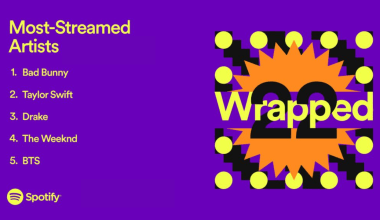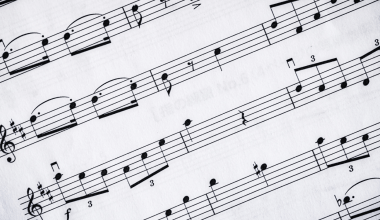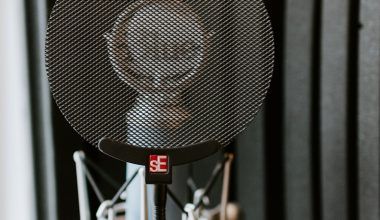So, you’ve decided to dive into the world of music production. That’s amazing! But now you’re probably wondering, “What’s the best software for making music as a beginner?” The truth is, there are so many options out there that it can feel overwhelming to choose. Don’t worry—I’ve got your back. This guide will help you find the perfect software to kickstart your music-making journey.
Why Choosing the Right Software Matters
When you’re just starting, the last thing you want is to feel bogged down by complicated tools. The right software, often called a DAW (Digital Audio Workstation), can make learning fun and easy. Whether you dream of creating EDM beats, recording vocals, or composing cinematic scores, there’s software designed to suit your needs. Plus, starting with beginner-friendly tools ensures you don’t get frustrated and give up before you’ve even begun.
What to Look for in Beginner-Friendly Music Software
Before diving into the list of the best software for making music as a beginner, let’s discuss what makes software beginner-friendly:
- Ease of Use: The interface should be intuitive and not require a steep learning curve.
- Affordability: You shouldn’t have to spend a fortune to start creating music.
- Tutorials and Support: Look for software with plenty of online tutorials and a supportive community.
- Features: While simplicity is key, the software should still offer essential tools like drum kits, synths, and audio recording.
- Compatibility: Ensure it works on your computer’s operating system.
The Top Choices for Beginners
Here are some of the best music-making software options for beginners. Each one has its own strengths, so choose what feels right for you.
1. GarageBand (Mac Only)
GarageBand is often hailed as one of the best music software options for beginners. Why? It’s free for Mac users, and it’s incredibly user-friendly. The interface is clean, and it comes with a range of built-in instruments and loops.
- Why It’s Great:
- Drag-and-drop functionality
- Built-in virtual drummer and amp simulations
- Great for recording vocals and instruments
- Drawback:
- Only available for macOS
2. Audacity
Audacity is a free, open-source audio editor that’s perfect for beginners who want to start with simple recordings and edits. It’s more basic compared to others on this list, but it’s an excellent stepping stone.
- Why It’s Great:
- Free and lightweight
- Simple editing tools
- Works on Windows, macOS, and Linux
- Drawback:
- Limited advanced features
3. FL Studio (Formerly FruityLoops)
FL Studio is a favorite among electronic music producers. Its beginner-friendly interface and drag-and-drop features make it accessible, but it also has advanced tools for when you’re ready to level up.
- Why It’s Great:
- Lifetime free updates
- Tons of online tutorials
- Includes virtual instruments and effects
- Drawback:
- Paid software with different pricing tiers
4. Ableton Live Intro
Ableton Live is widely used in the professional music scene, but its Intro version is beginner-friendly. It’s especially great if you’re interested in live performances or electronic music.
- Why It’s Great:
- Intuitive workflow
- Excellent for creating loops
- Comes with high-quality built-in sounds
- Drawback:
- Can feel overwhelming initially
5. BandLab
BandLab is a free, cloud-based DAW that’s perfect for beginners who want to make music online. It’s accessible from any device and has collaborative features that let you work with friends.
- Why It’s Great:
- Free and accessible
- Works on desktop and mobile
- Collaborative tools
- Drawback:
- Limited advanced features
6. Logic Pro X
If you’ve tried GarageBand and want to take things up a notch, Logic Pro X is a natural step forward. It’s more advanced but still user-friendly for beginners ready to explore deeper features.
- Why It’s Great:
- Tons of plugins and loops
- Professional-grade tools
- Seamless transition from GarageBand
- Drawback:
- Only available for macOS
How to Get Started
Here’s how to dive into music production with your chosen software:
- Install the Software: Download and install the software on your computer or device.
- Learn the Basics: Use tutorials on YouTube or the software’s website to get familiar with its interface.
- Experiment: Play around with loops, instruments, and effects. Don’t be afraid to make mistakes.
- Create Your First Track: Start simple. Focus on creating a short loop or melody and build from there.
- Join Communities: Online forums and social media groups are great for learning tips and getting feedback.
Final Thoughts: Picking the Best Software for You
The best software for making music as a beginner ultimately depends on your preferences and goals. Whether you choose GarageBand, FL Studio, or BandLab, the most important thing is to start creating. Don’t overthink it. The sooner you dive in, the sooner you’ll be making the music you’ve always dreamed of.
Related Articles:
For further reading, explore these related articles:
For additional resources on music marketing and distribution, visit DMT Records Private Limited.






